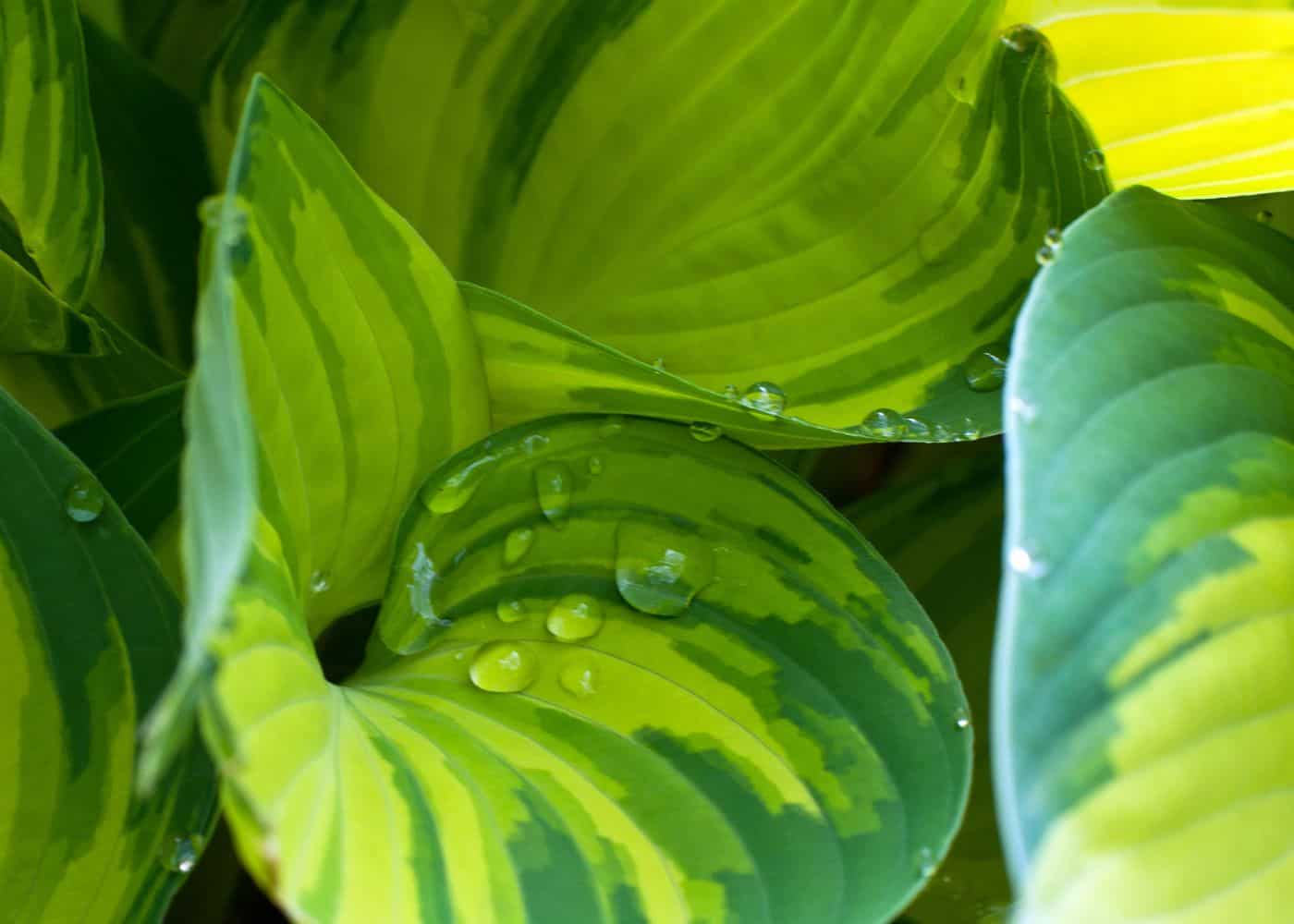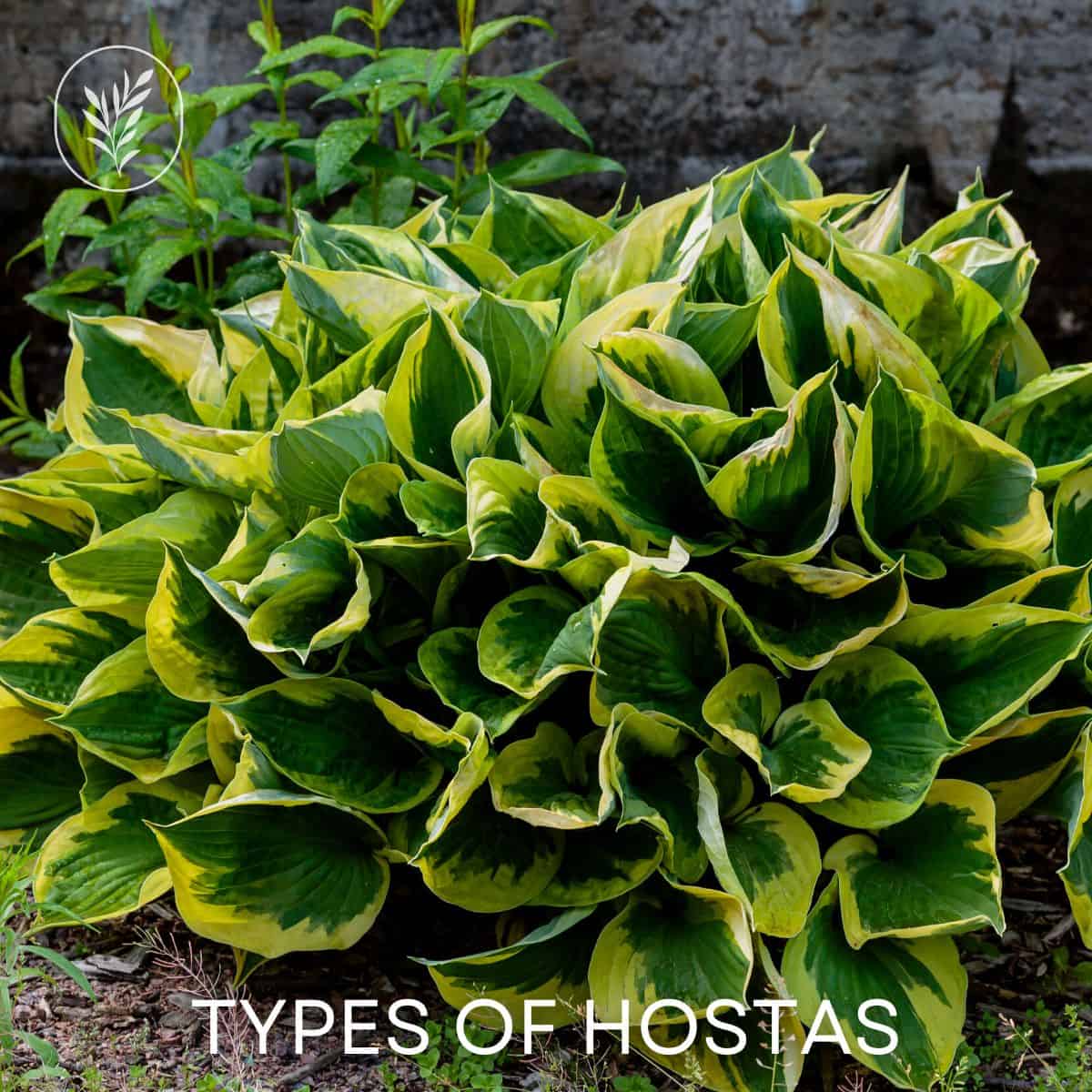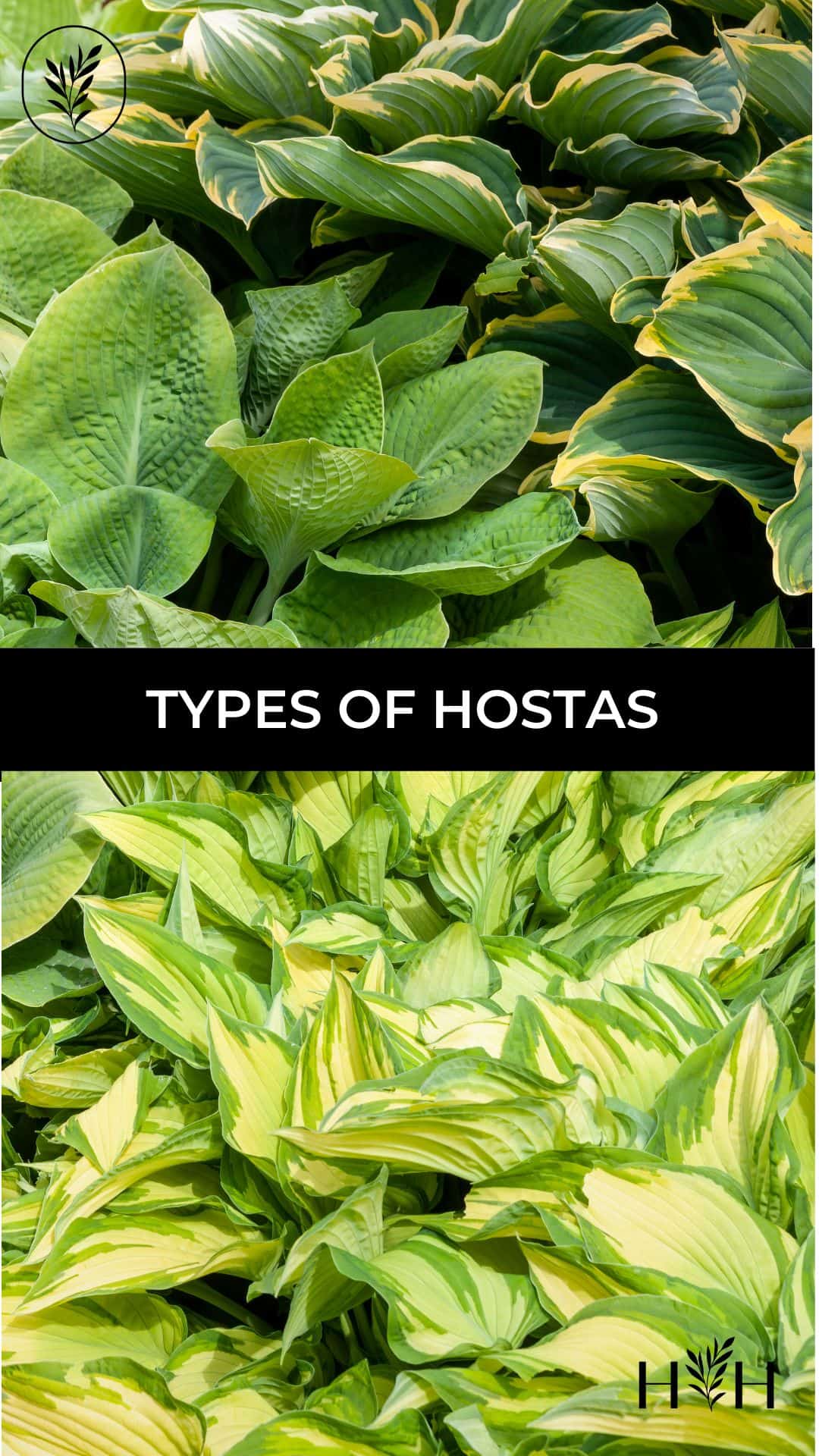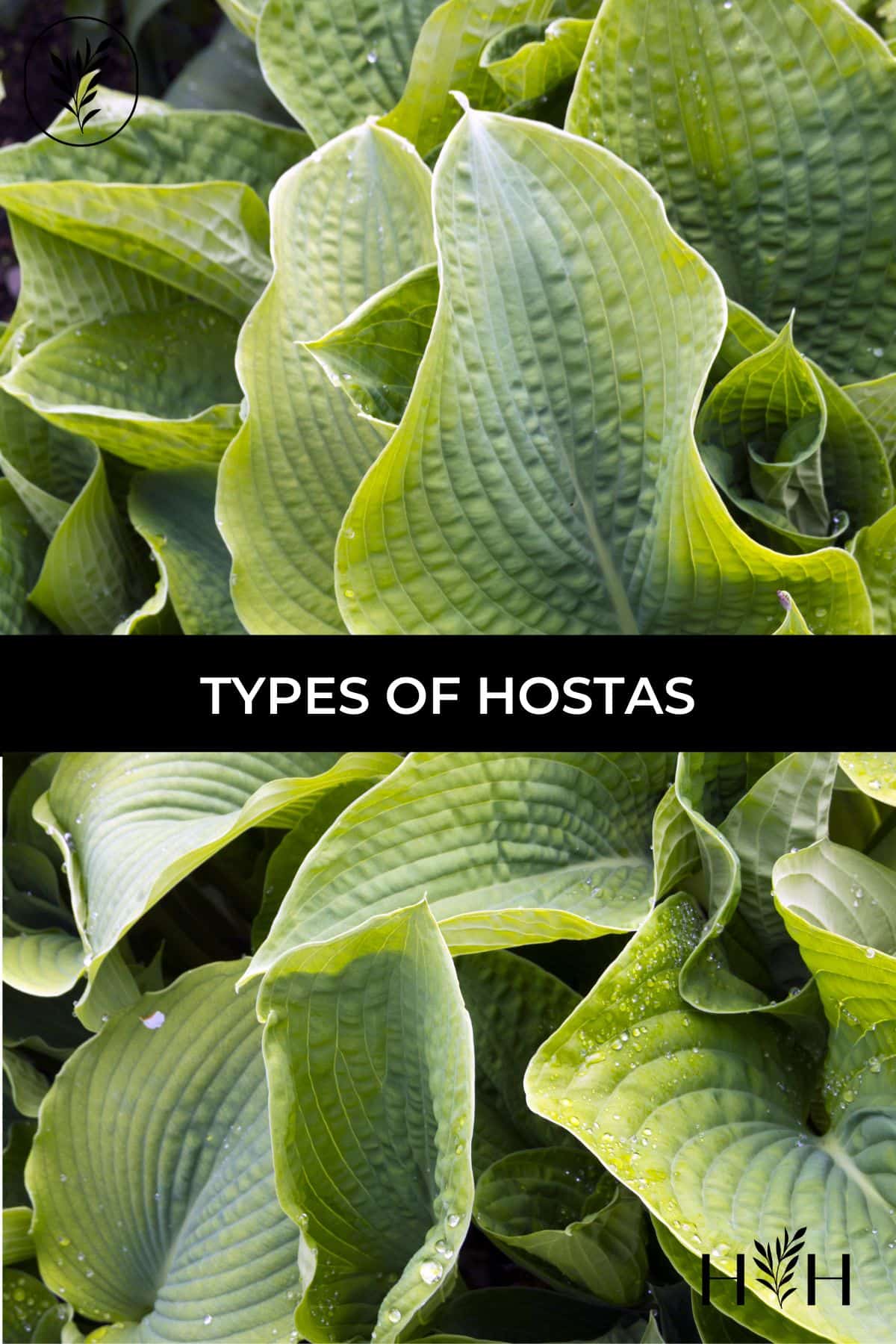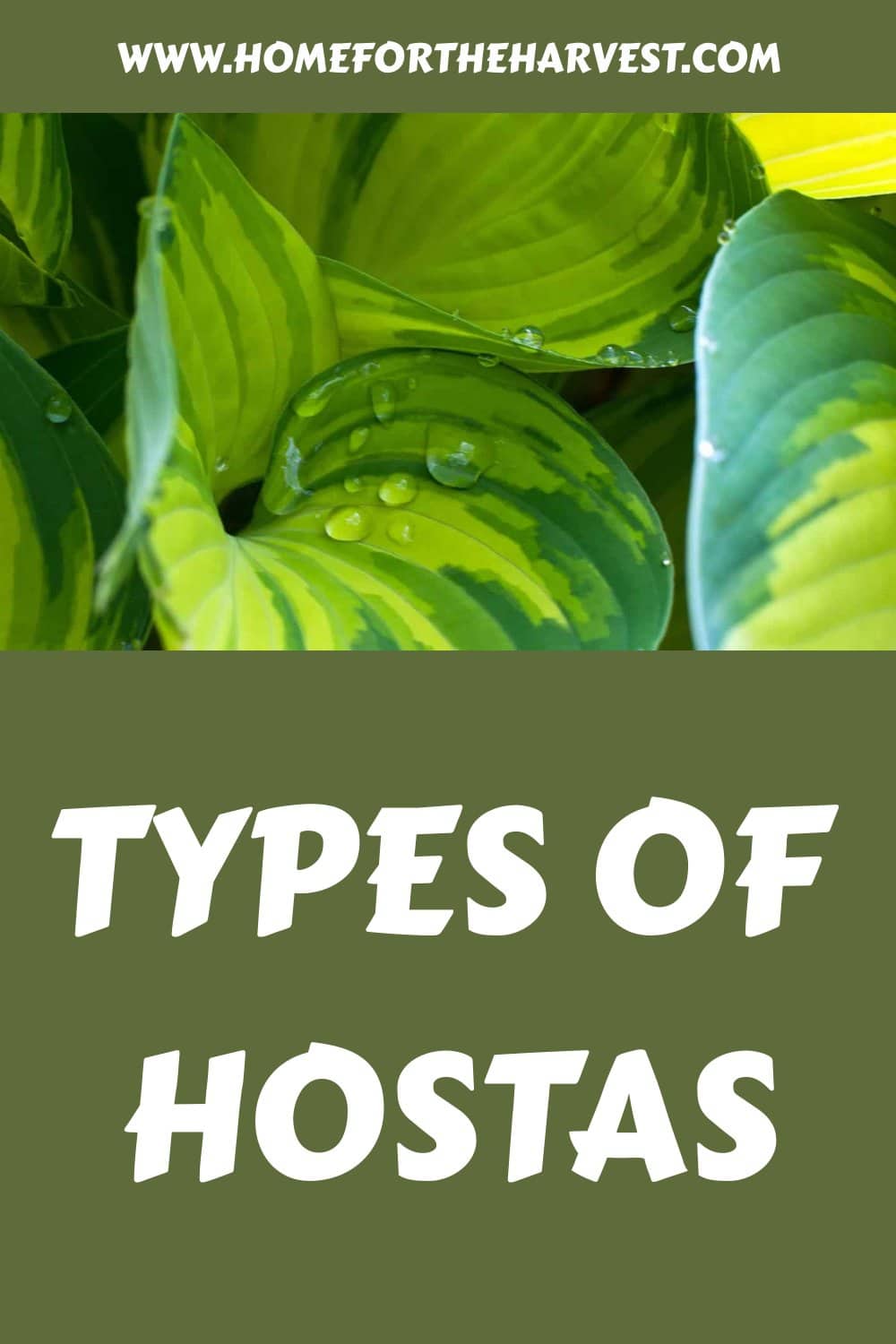There are over 40 different species of hosta and thousands of different cultivars. The most popular hosta species include Hosta plantaginea, Hosta ventricosa, and Hosta sieboldiana. Thousands of popular named cultivars have been bred from these wild hosta species and are now grown in gardens around the world.
General types of hostas
Hosta is a genus of herbaceous perennial plants in the asparagus family. These foliage ornamentals are native to Japan and some areas of China and Korea. Hostas tend to grow in shady forested areas of very rainy climates that have at least a few weeks of cool weather in the winter.
There are over 40 known species of hosta, as well as countless hybrids in cultivation. Of the 40+ species, the eight most common types are:
- Hosta plantaginea
- Hosta ventricosa
- Hosta sieboldiana
- Hosta longipes
- Hosta clausa
- Hosta capitata
- Hosta sieboldii
- Hosta montana
The hostas listed above are wild species and are sometimes planted in gardens. There are also many hybrids developed by breeders using natural techniques, such as these popular varieties of hosta.
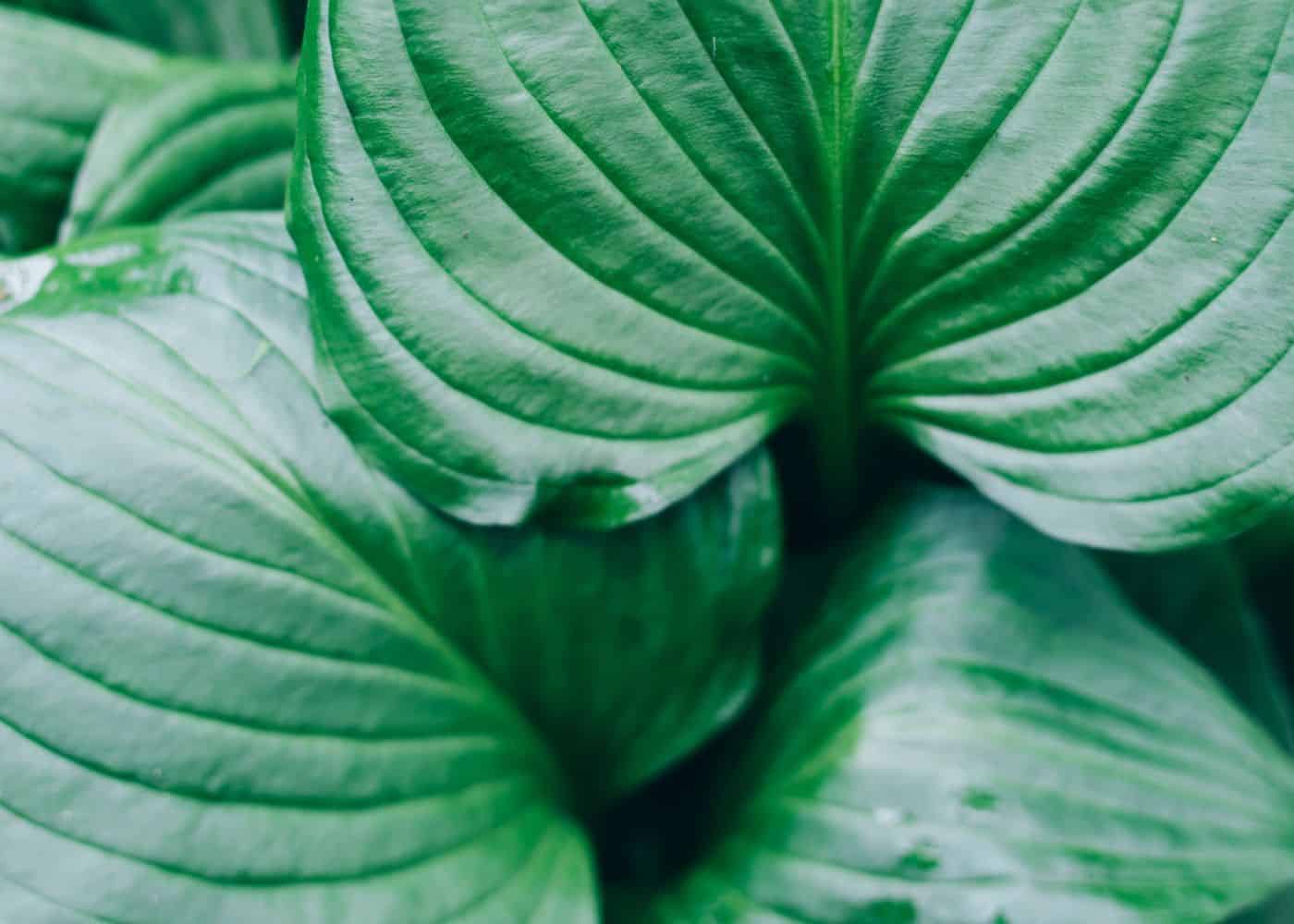
Hosta plantaginea
Hosta plantaginea is a large species of hosta with shiny green leaves and white fragrant flowers. Hosta plantaginea is native to southern China, where it is tolerant of sunny areas as long as the plant has enough water. The leaves tend to turn a chartreuse glossy shade in the sun.
Here are some popular named cultivar varieties of Hosta plantaginea:
- Hosta plantaginea ‘Aphrodite’
- Hosta plantaginea ‘Athena’
- Hosta plantaginea ‘Chelsea Ore’
- Hosta plantaginea ‘Heaven Scent’
- Hosta plantaginea ‘White Swan’
Hosta plantaginea often grows into a mound of leaves about 5 feet wide and 2 feet tall. The flower stalks generally bloom right above the leaves on stalks about 2.5 feet tall. Breeders use this species as a parent species for big, sun-tolerant hosta varieties.
Here are some popular garden hosta cultivars bred from Hosta plantaginea:
- Hosta ‘Royal Standard’
- Hosta ‘Bennie McRae’
- Hosta ‘Honeybells’
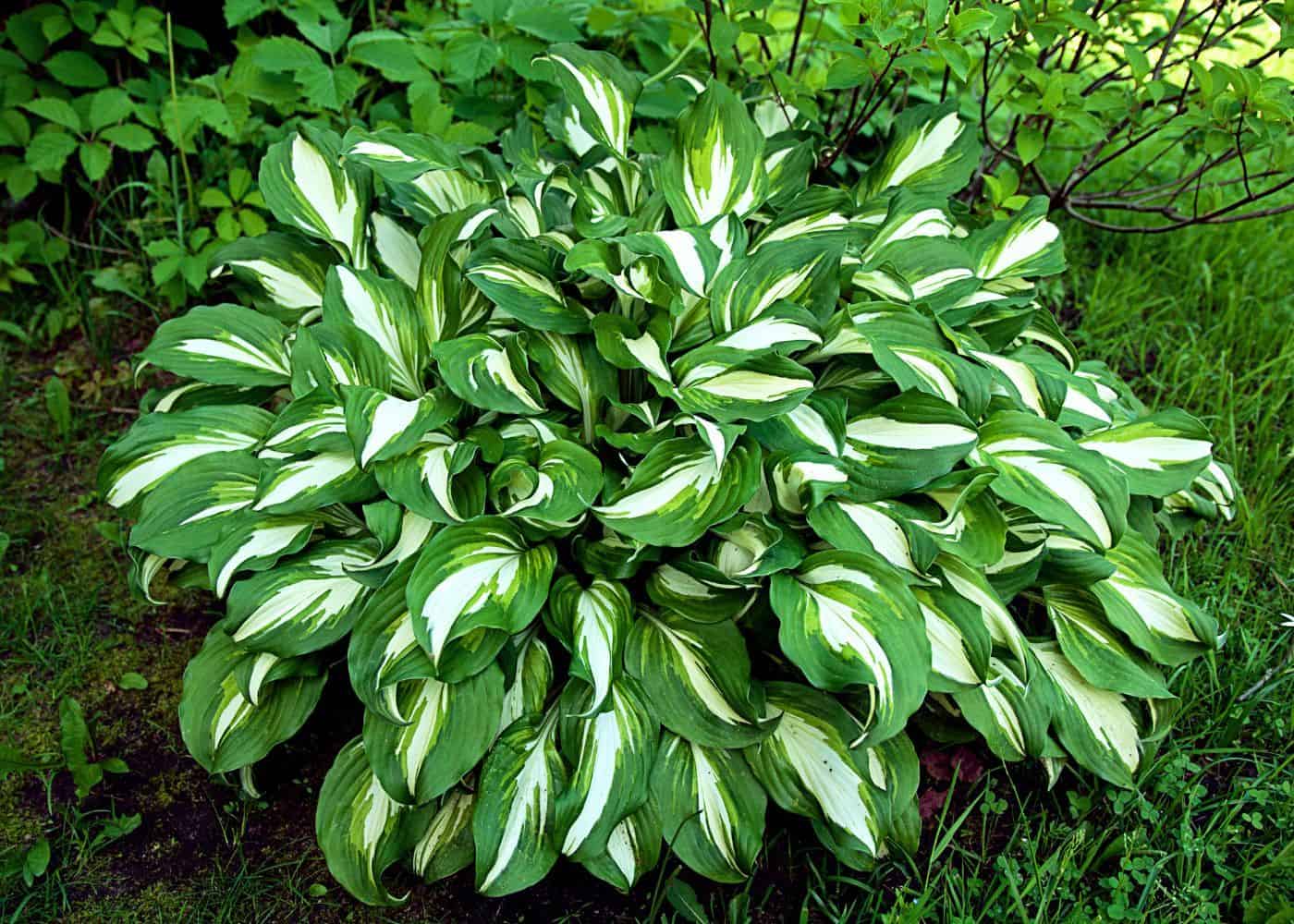
Hosta ventricosa
Hosta ventricosa is a large species of hosta with dark green shiny ribbed leaves and lavender flowers. Hosta ventricosa is native to China and Korea and is known as the only species of hosta that grows reliably true from seed (as it is a natural tetraploid).
Here are some popular named cultivar varieties of Hosta ventricosa:
- Hosta ventricosa ‘Aureomaculata’
- Hosta ventricosa ‘Aureomarginata’
This species has unique undulating leaf edges, which are often called “rippled” or “pie-crusted.” The very dark black-green leaves are also quite thin and can be damaged by direct sunlight.
Hosta ventricosa plants typically grow about 4 feet wide and just under 2 feet tall. The flower stalks shoot up above the leaves, typically reaching about 3 feet tall while flowering. Hosta ventricosa has been used extensively by breeders as a pollen parent to produce cultivars with pie-crusted rippled leaf edges.
Here are some popular garden hosta varieties bred from Hosta ventricosa:
- Hosta ‘Flame Stitch’
- Hosta ‘Fury of Flame’
- Hosta ‘Holly’s Honey’
- Hosta ‘Lakeside Black Satin’
- Hosta ‘Rosedale Barnie’
- Hosta ‘Heartache’
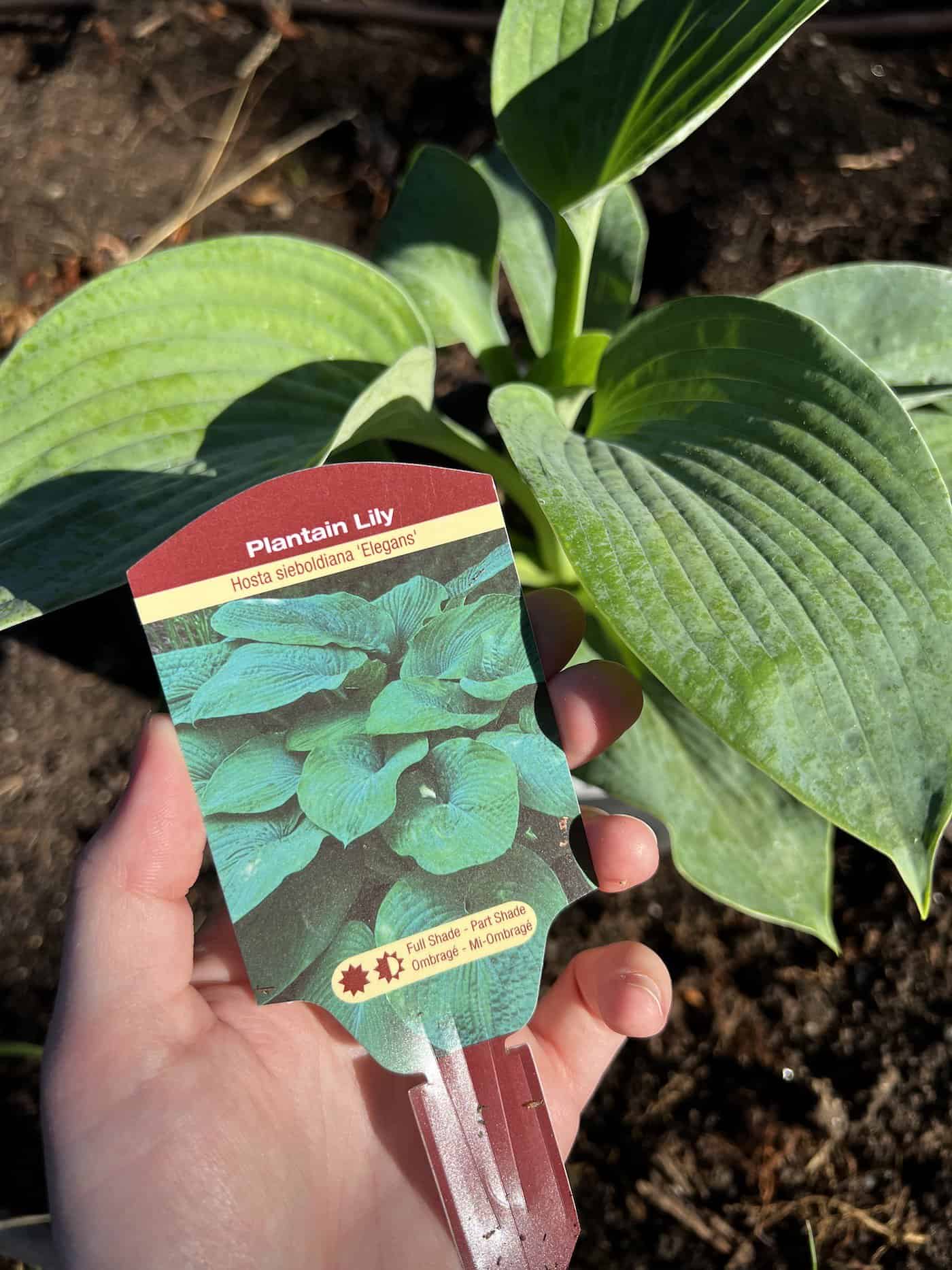
Hosta sieboldiana
Hosta sieboldiana is a large species of hosta with thick matte blue-green leaves and pale lavender flowers with streaks. Hosta sieboldiana is native to Japan’s main island.
Also known as Giant Blue hosta, this species is known for being somewhat pest resistant as the common pests like slugs and snails do not like the thick dusty blue-green leathery leaves. These plants are slow-growing but can achieve a moderate growth rate if morning sun is provided along with ample moisture.
Here are some popular named cultivar varieties of Hosta sieboldiana:
- Hosta sieboldiana ‘Elegans’
- Hosta sieboldiana ‘Mira’
- Hosta sieboldiana ‘Frances Williams’
- Hosta sieboldiana ‘American Masterpiece’
- Hosta sieboldiana ‘Golden Circles’
- Hosta sieboldiana ‘Great Expectations’
Hosta sieboldiana plants usually grow to reach about 5 feet wide and 2 feet tall when grown in partial shade. The flower stalks are about 2 feet tall. Hosta sieboldiana is commonly used as a parent variety for large hosta cultivars with grey-blue leaves.
Here are some popular hosta varieties bred from Hosta sieboldiana:
- Hosta ‘Halcyon’
- Hosta ‘Big John’
- Hosta ‘Empress Wu’
- Hosta ‘Price of Wales’
- Hosta ‘Abiqua Drinking Gourd’
- Hosta ‘Blue Boy’
- Hosta ‘Blue Moon’
- Hosta ‘Blue Bush’
- Hosta ‘Blue Danube’
- Hosta ‘Hadspen Blue’
- Hosta ‘Hadspen Samphire’
- Hosta ‘Maui Buttercups’
- Hosta ‘Camelot’
- Hosta ‘Golden Sculpture’
- Hosta ‘Neat and Tidy’
- Hosta ‘Osprey’
- Hosta ‘Gentle Giant’
Hosta longipes
Hosta longipes is a medium-sized hosta with thick, shiny, dark green leaves and lavender-colored floweres. Hosta longipes is native to Japan’s main island.
Hosta longipes is popular because this species grows quite a bit faster than some other types of hostas. It also can develop red-purple dots or streaks on the petioles (stalk of each leaf). This species is somewhat tolerant of sun but should be given shade in the afternoon.
Here are some popular named cultivar varieties of Hosta longipes:
- Hosta longipes ‘Latifolia’
- Hosta longipes ‘Hypoglauca’
Hosta longipes plants usually grow to reach about 20 inches wide and 8 inches tall. The flower stalks are about 12 inches tall. Hosta longipes is commonly used as a parent variety for specialty hosta varieties with red-streaked leaf stalks.
Here are some popular hosta varieties bred from Hosta longipes:
- Hosta ‘Red Sox’
- Hosta ‘Brandywine’
- Hosta ‘Cinnamon Sticks’
- Hosta ‘Green Fountain’
- Hosta ‘One Man’s Treasure’
- Hosta ‘Grand Slam’
- Hosta ‘Fire Island’
- Hosta ‘Elvis Lives’
- Hosta ‘High Tide’
Hosta clausa
Hosta clausa is a small species of hosta with shiny narrow dark green leaves and a purple flower bud that remains closed (hence the botanical latin name ‘clausa‘). Hosta clausa is native to Korea.
Hosta clausa is known as the only “spreading” hosta species. This type of hosta is rhizomatous (has creeping rhizomes) and is in the genus section “Stoloniferae“. In consistently moist soil, its roots can spread underground to create a self-propagating shade groundcover. This species also has very skinny leaves that look almost like the leaves of lily-of-the-valley plants.
Hosta clausa plants typically start at about one foot wide and one foot tall, but quickly spread in moist soil to colonize a large area of ground. The flower stalks are much taller than the leaves, reaching 2.5 feet tall. The purple flowers do not open (except on the specialty var. normalis). Hosta clausa is used to produce spreading hosta varieties.
Here are some popular garden hosta varieties possibly descended from Hosta clausa:
- Hosta ‘Abiqua Ground Cover’
- Hosta ‘Decorata’
- Hosta ‘Betsy King’
Hosta capitata
Hosta capitata is a medium-sized hosta species with stout matte green leaves and purple-streaked flowers. Hosta capitata is native to southern areas in Korea and the island of Shikoku in Japan. This species is known for its rippled “pie-crust” edge leaves and thick clusters of purple flowers.
Hosta capitata plants grow to a thick mound about 2.5 feet wide and only 10 inches tall. The flowers grow on strong stalks that reach almost 2 feet tall on healthy plants (well above the leaves).
Here are some popular hosta varieties likely descended from Hosta capitata:
- Hosta ‘Golden Tiara’
- Hosta ‘Grand Tiara’
Hosta sieboldii
Hosta sieboldii is a medium-sized hosta species with bright green skinny leaves and lilac-colored flowers with darker purple stripes. Hosta sieboldii is native to Japan and is known for being one of the more sun-tolerant hosta species. It is sometimes also referred to as the small-leaved plantain lily and often has golden yellow-green leaves.
Here are some popular named cultivar varieties of Hosta sieboldii:
- Hosta sieboldii ‘Alba’
- Hosta sieboldii ‘Hart’s Tongue’
- Hosta sieboldii ‘Anne Arett’
- Hosta sieboldii ‘Kabitan’
- Hosta sieboldii ‘First Mate’
Hosta sieboldii plants usually grow to reach about 2.5 feet wide and 1 foot tall. The flower stalks are usually about 2 feet tall. Hosta sieboldii is commonly used as a parent variety for sun-tolerant hostas with bright, lime-green skinny leaves.
Here are some popular hosta varieties bred from Hosta sieboldii:
- Hosta ‘Royal Standard’
- Hosta ‘Betsy King’
- Hosta ‘Honeybells’
- Hosta ‘Feather Boa’
- Hosta ‘Golden Oriole’
- Hosta ‘Golden Spades’
- Hosta ‘Hadspen Samphire’
Hosta montana
Hosta montana is a large hosta species with thick green ribbed leaves and pale lilac flowers. Hosta montana is native to Japan and is commonly used by hosta breeders to create large, pest-resistant cultivars that often have heavily textured variegated leaves.
Here are some popular named cultivar varieties of Hosta montana:
- Hosta montana ‘Aureomarginata’
- Hosta montana ‘Mountain Snow’
- Hosta montana ‘Choko Nishiki’
Hosta montana plants usually grow to reach about 4 feet wide and 2 feet high. The flower stalks are usually about 4 feet tall. Hosta montana is commonly used as a parent variety for slug-resistant variegated large garden hostas.
Here are some popular hosta varieties bred from (or likely descended from) Hosta montana:
- Hosta ‘Blue Angel’
- Hosta ‘Sum and Substance’
- Hosta ‘Donahue Piecrust’
- Hosta ‘Dragon Wings’
- Hosta ‘Niagra Falls’
- Hosta ‘Great Lakes Gold’
- Hosta ‘Elatior’


